Lennart Pittja is a Sámi entrepreneur with a mission: with his world-renowned eco-tourism company he wants to spread the knowledge about his people – the Sami, indigenous of northern Scandinavia and Russia. With over 20 years of experience as a wildlife guide and nature photographer in the arctic region he started Sápmi Nature Camp. Where his guests stay in Nordic tipis from Tentipi on his reindeer herding land outside of Gällivare, in northern Sweden.
People in general don't know anything about Sami culture. I wanted to create an experience where people can learn about Sami culture and nature at the same timeLennart Pittja, Sapmi
Nature At Sapmi Nature camp you can experience real winter, see the northern lights, eat traditional Sami food, and have a cultural exchange in a genuine atmosphere. The scenic location has gained attraction from around the world. In 2017 it was listed by National Geographic as one o Sapmi Nature camp is situated right in the middle of the land called Sapmi.
It is the region where the Sami people have traditionally lived. It stretches over the northern parts of Norway, Finland, Sweden, and the Kola peninsula in Russia.
The Sami was historically a nomadic people, often working as reindeer herdsmen and moving along the reindeer herds during the seasons. Often, they set up their campsites with simple lavuus and tipis consisting of wooden poles and animal hides. During the last centuries the Sami got more settled, stayed in the same location, and integrated into the majority societies.
For many Sami people it is still very important to maintain their Sami heritage and culture. Lennart Pittja grew up in a reindeer herding family. His dad was a reindeer herdsman and so was his grandfather, great grandfather, and so on for many generations back. It is in the middle of his family land that he set up Sapmi Nature Camp.
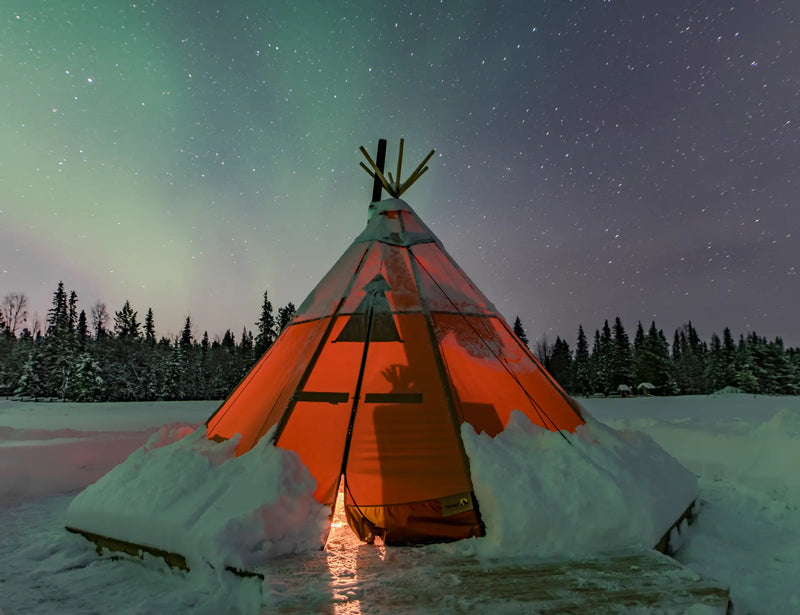
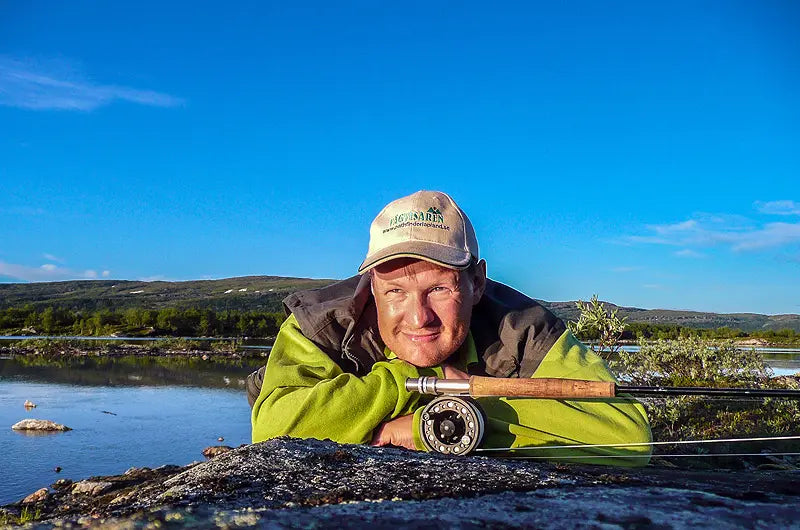
Quality and a good fit
Lennart Pittja has been in the tourism industry for over 20 years and has had tents from Tentipi for most of that time. He likes the fact that it looks Sami, that it fits in very well with the Sami experience that they are trying to convey at Sapmi Nature.
“There is a good quality in the product, they look good and they work well”, says Lennart Pittja.
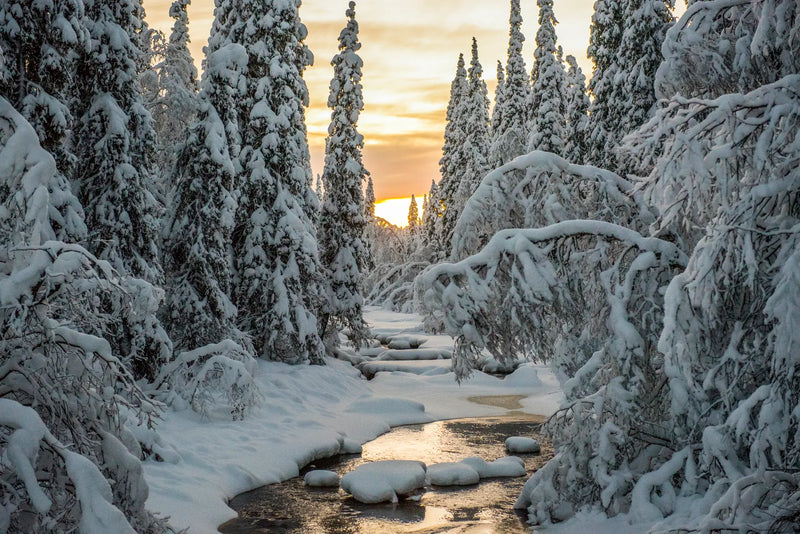
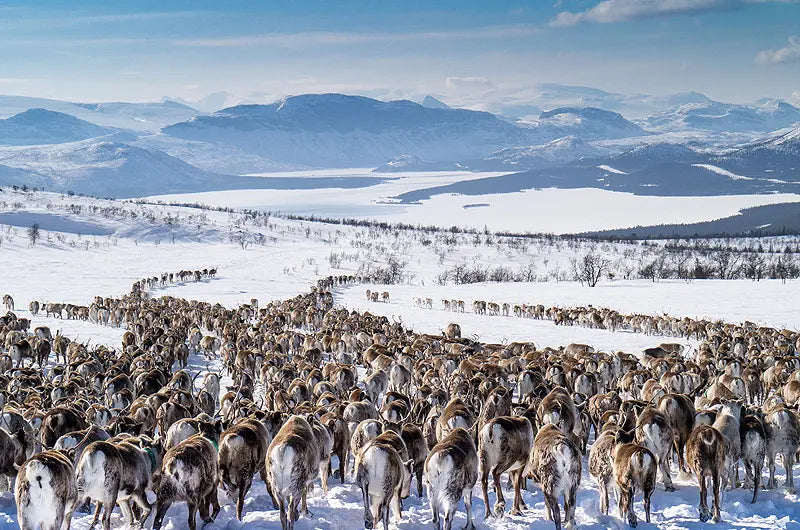
Sami hosts
The Sami experience that is presented to the guests at Sapmi Nature takes place in a few different ways. There are always Sami hosts on site, that way guests can have a sit down and talk to a Sami person.
Another important part of the Sami experience comes from the food that the guides prepare. They serve a traditional Sami cuisine, like smoked fish or reindeer.
“We have real winter with a lot of snow, we have the northern lights, and we even have a couple of weeks during the winter when the sun never comes up over the horizon which gives another very unique light, says Lennart Pittja.
We are now on the land of my mountain Sami community, called Unna Tjerusj, which means "The little Sami community
Lennart Pittja
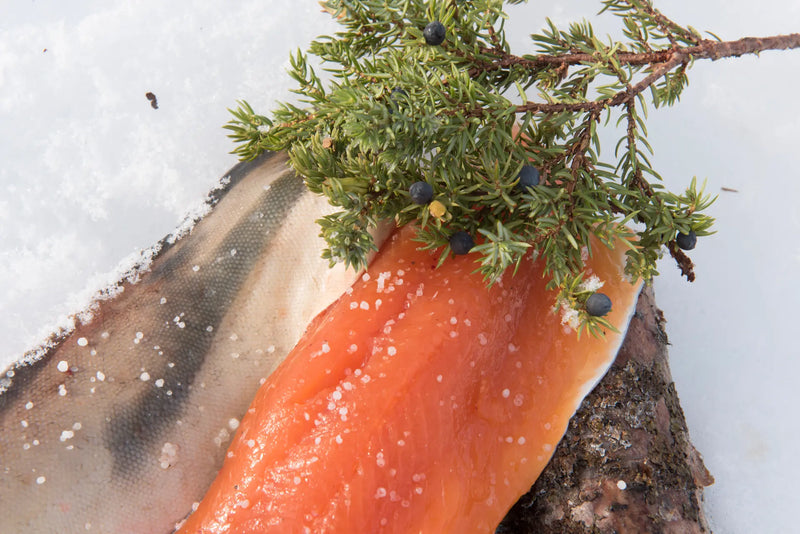
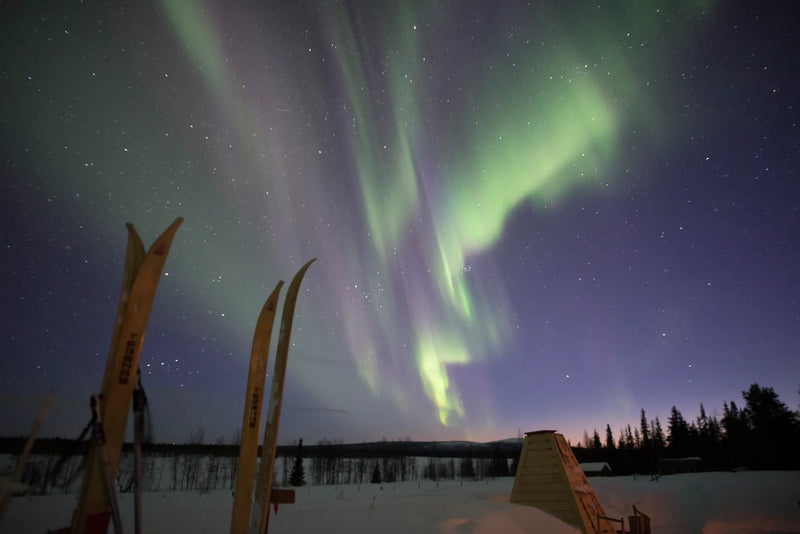
The land between two lakes
Other activities include a visit to the Stuor Muorkke National Park which is located very close to Sapmi nature camp right in the heart of Unna Tjerusj. Stuor Muorkke is the park’s Sami name. That translates to a large “mårka”, the land between two lakes. In Swedish the park is called Stora sjöfallet which means the great waterfall.
The national park was founded in 1909 to protect the waterfall and the lakes around it. But the park’s area was later reduced to make room for a hydroelectric power plant and the waterfall known as the Stuormuorkkegårttje in the Sami language lost some of its great grandeur. The Stuor Muorkke National Park is still home to a lot of wildlife, and its breath-taking scenery makes it a memorable visit.
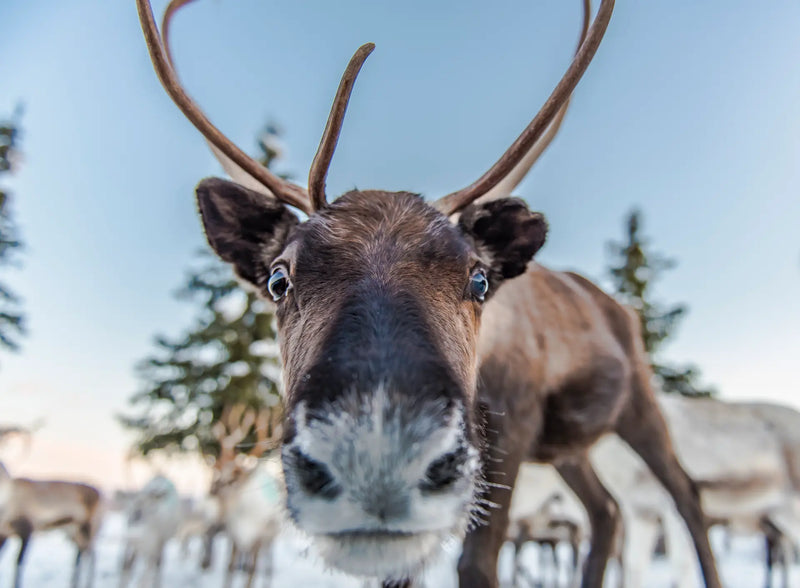
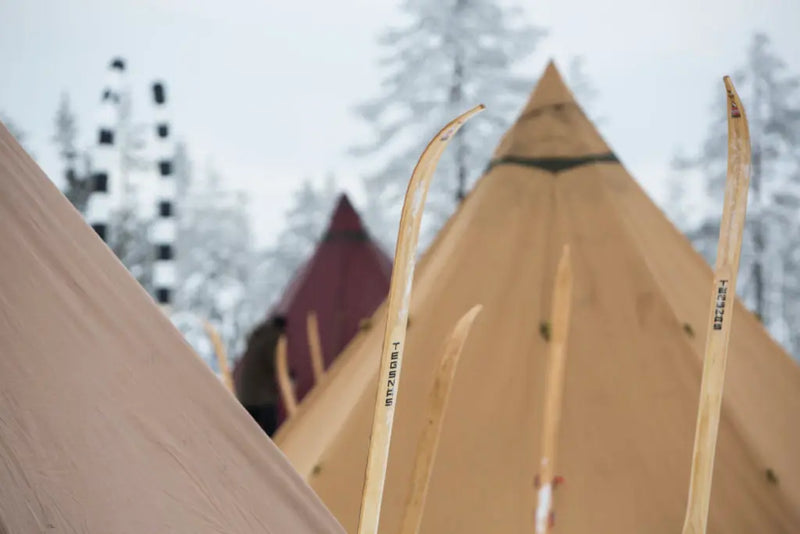
Living without disturbing the land
Sapmi Nature Camp is a very small-scale glamping site. Usually there are only a handful of guests there at the same time, with a maximum of around six to ten guests. This is done to leave as much of nature untouched as possible and to not disturb the reindeer grazing land.
For the lodging, Lennart Pittja has built platforms where he has pitched a couple of Cirrus 20 Nordic tipis from Tentipi. He built the platforms for easier access and comfort when the tents are pitched on a plane surface, but also to preserve the ground. The large rooms are furnished with a comfortable double bed and have a powerful stove to keep the heat in the cold winter.
I have stayed in this room when it was -34°C outside. Thanks to the stove it was warm and comfortable inside. So this is arctic, but in a very comfortable, safe and accessible way
Lennart Pittja
Culture and comfort
“The “lavvu”, the tent is something that we have been using for many hundreds of years. The same way of living can be found in many indigenous cultures around the world. Which means that they work. They’ve been tested for thousands of years. The working solution, that’s essential”, says Lennart Pittja.
Using a modern version of a traditional Sami Lavvu at the camp is another way to make the camp a bit more Sami, but still have a great amount of comfort. Similarly, Lennart Pittja points out the Sami today live in modern houses, and they drive cars. Lennart Pittja does not wear traditional Sami clothing while at work.
“For me that would be unnatural and uncomfortable. I wear other clothes when I’m working But I’m very proud of my Sami origin and my Sami clothes”, says Lennart Pittja.
Being able to share their Sami culture, and at the same time provide an exclusive experience in the Swedish wilderness is what has made Sapmi Nature camp a success and an interesting place to visit for people from all around the world.
“I’m very proud to be out here, to be a link in this chain. This is home”, says Lennart Pittja.
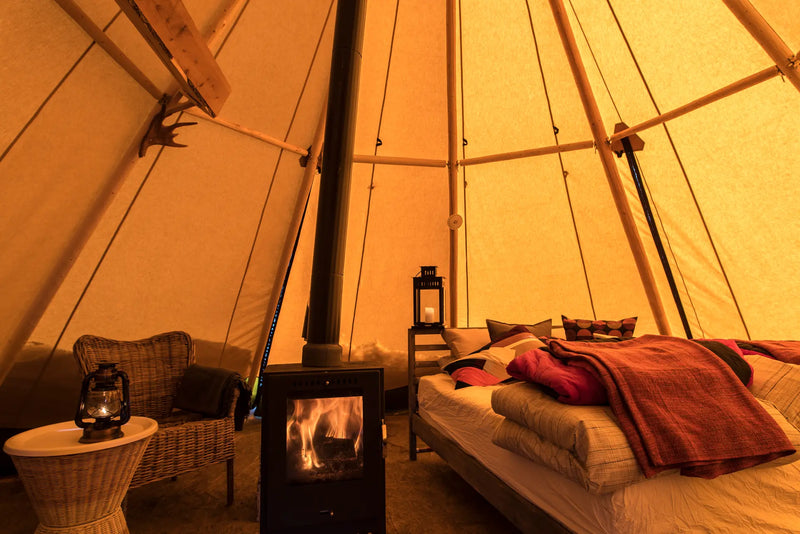
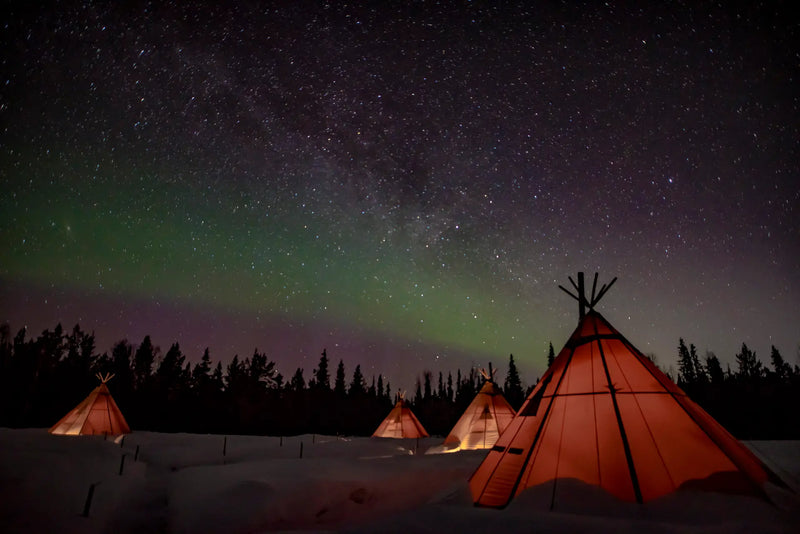
Sapmi Nature Camp has moved since the video was filmed. The photos in the blogpost is from the new camp location. Sources:
https://www.nationalparksofsweden.se/choose-park---list/stora-sjofallet--stuor-muorkke-national-park/national-park-facts/ https://www.sapminature.com/







